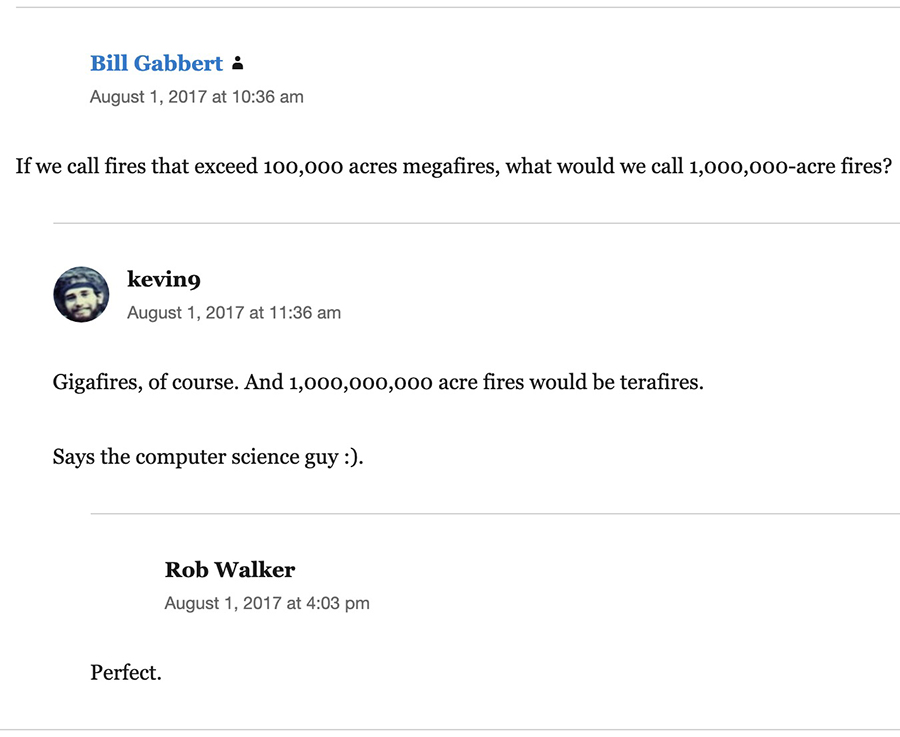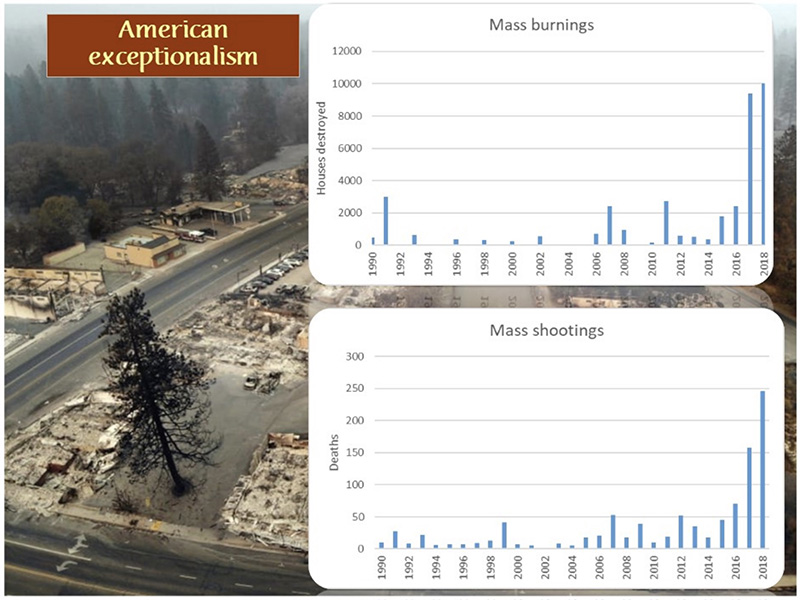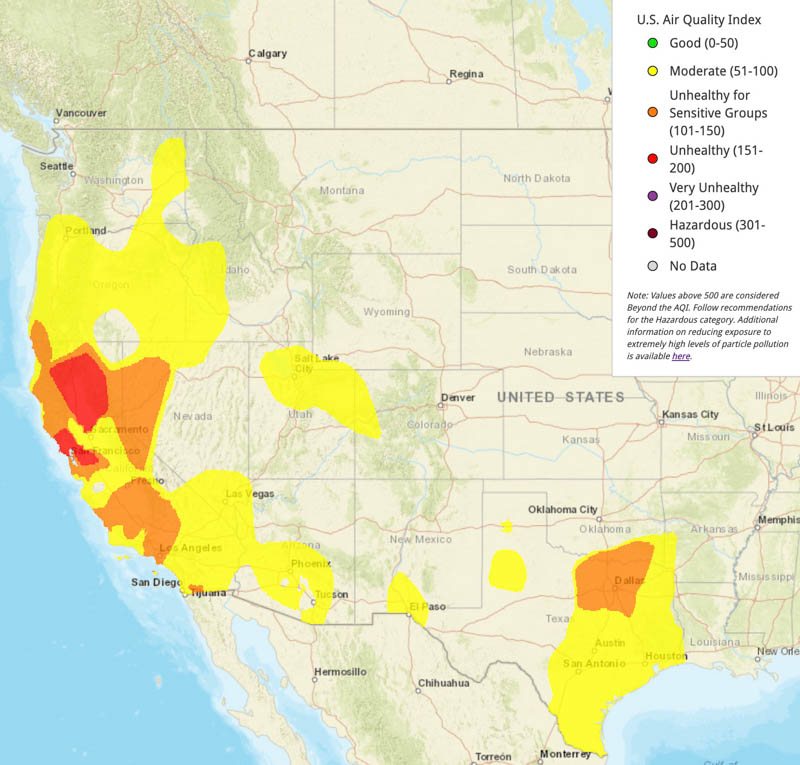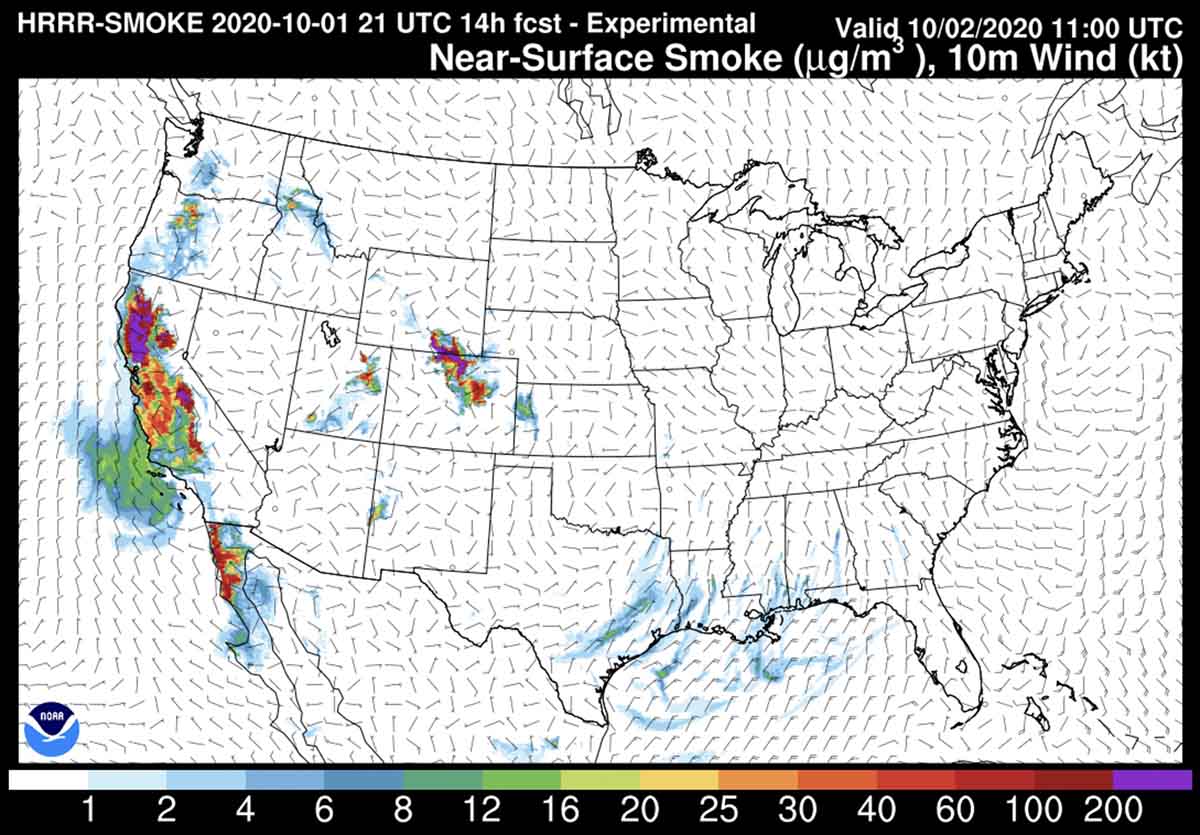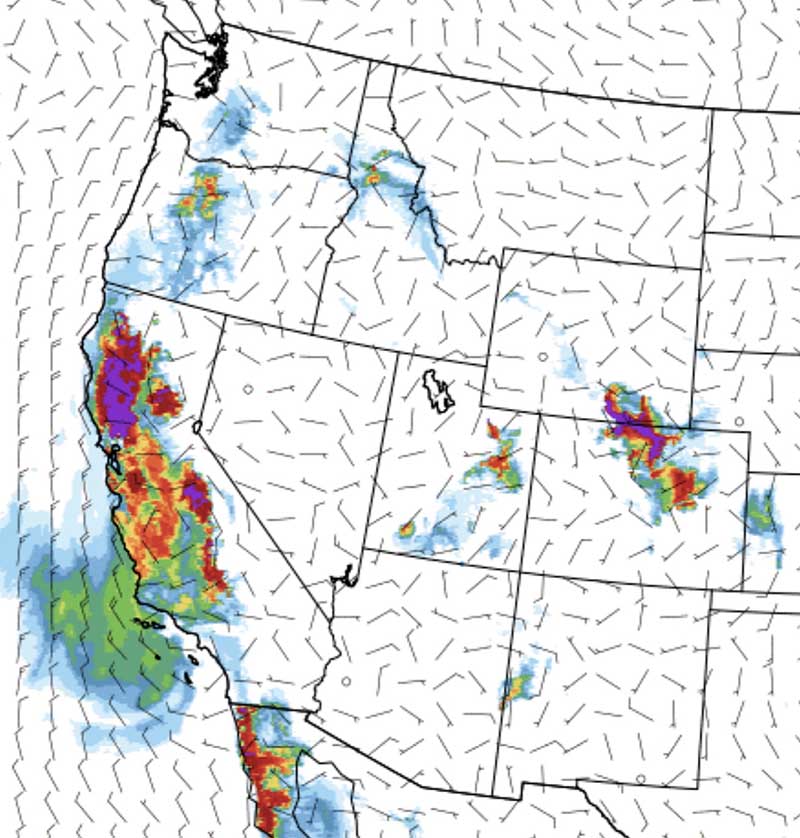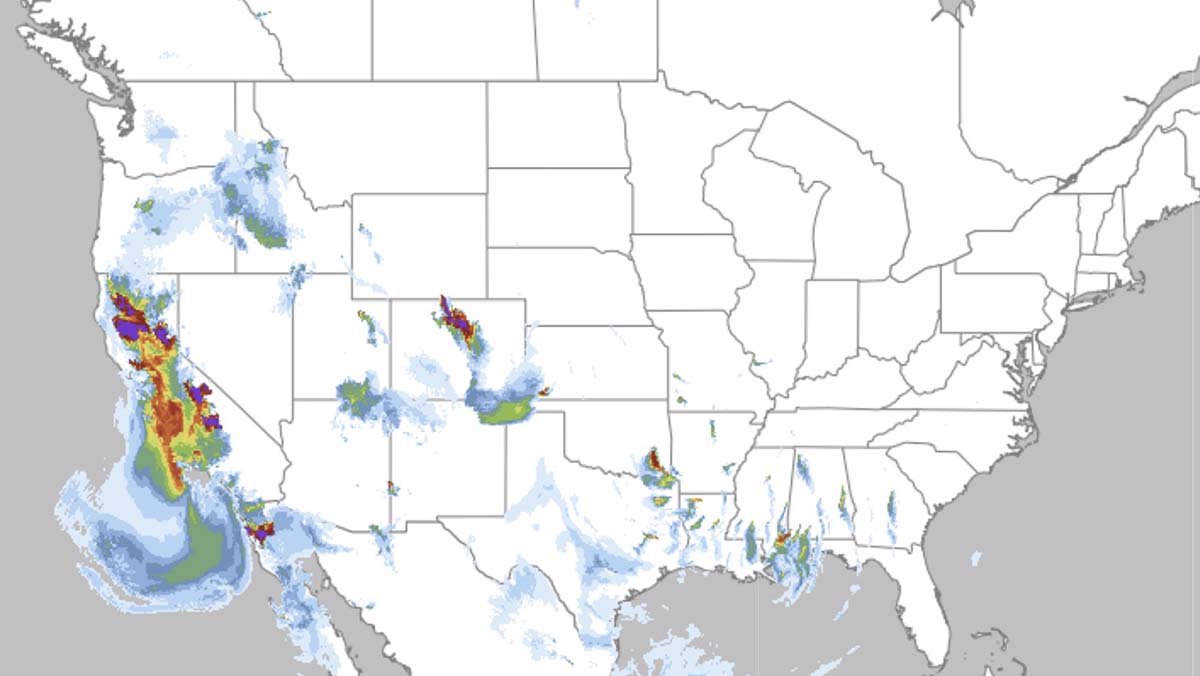After the August Complex fire grew beyond 1 million acres news articles around the world yesterday referred to it as a “gigafire”. For an article they were working on, Harmeet Kaur a reporter for CNN contacted us yesterday.
I’m interested in the origin of the term “gigafire” and how it compares to “megafire.” From what I’ve been reading on your website, it seems that you may have coined the terms. Could you confirm whether that is the case?
I told the reporter that as far as I know, a person working for the U. S. Forest Service was one of the first to use “megafire” to describe a fire that burns 100,000 acres. But to my knowledge the first use of “gigafire” for a 1 million-acre fire occurred on Wildfire Today in 2017.
Below an article I wrote about the Elephant Hill Fire in British Columbia which at that time had burned 194,000 acres, I posted a comment asking our readers to suggest a term to describe 1,000,000-acre fires. “kevin9” wrote, “Gigafires, of course.” So he gets the credit for coining the term.
On July 10, 2018 we first used the word in an article on Wildfire Today when writing about the 425,000-acre Martin Fire in Northern Nevada.
When a wildfire reaches 100,000 acres we often refer to it as a “megafire”. But what name do we put on a fire when it is four times the megafire threshold? The incident management team on the Martin Fire in Northern Nevada estimates their fire has burned approximately 425,000 acres. (I think we should reserve “gigafire” for a 1 million-acre fire.)
The next time we used the word was October 26, 2018 in an article with the headline, Bushfire in Australia burns over 2 million acres, becoming a “gigafire”. Following that, it showed up in more articles — Chuckegg Creek Fire in Alberta, six bushfires in Australia that merged, and most recently, the August Complex fire in California.
We are aware of one gigafire that has occurred in the United States within the last few decades.
The fires in the greater Yellowstone area in 1988 burned a total of 1.6 million acres. The largest was the result of five fires burning together totaling 1,200,453 acres: North Fork, Clover Mist, Fan, Hellroaring, and Storm Creek.
The seven fires that comprised the Taylor Complex of fires in Alaska in 2004 totaled 1,303,358 acres, with the largest being the Billy Creek Fire at 463,994 acres.
Fire managers sometime arbitrarily draw a line on a map around multiple separate fires and call the group a “complex” in order to simplify the organization and paperwork, but they are still multiple fires. On a largest-fires list, complexes treated as one fire should not be welcome, but fires that burn together should be allowed.
